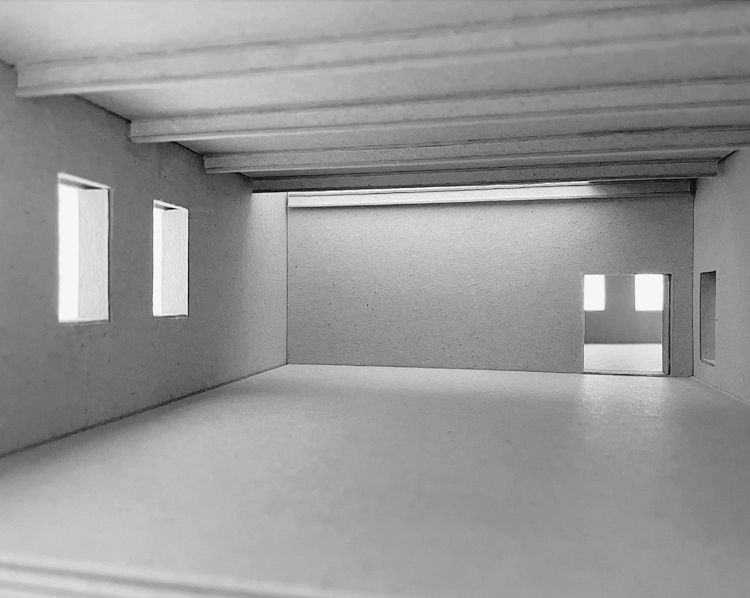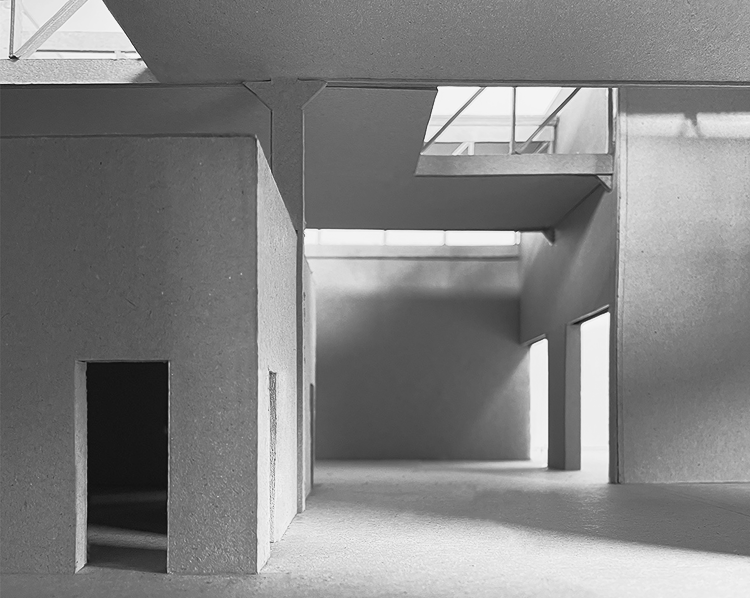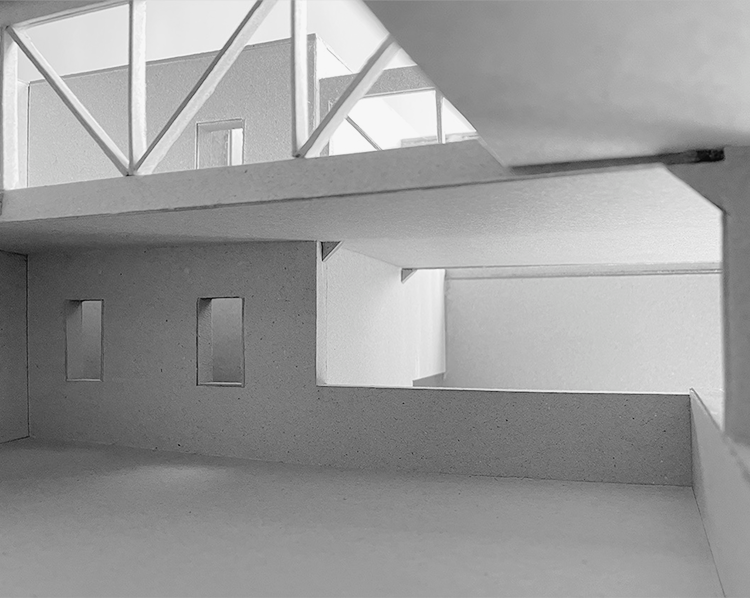THE FIRE STATION
The assignment started with a case study: an analysis of the construction and structural elements of the Künstlerhaus designed by Bearth & Deplazes in Marktoberdorf, Germany.
The conclusions from this study were then used for the design of a new fire station
in the city of Lillo in Antwerp, Belgium.
BSc AR dissertation – June 2022

ARCHITECTURE IS NOT INTERESTING
At the introduction of the assignment, our eyes fell on the term “the intelligent ruin” that bOb van Reeth introduced as former – and first – Flemish Government Architect.
In his publication, “Architecture is not interesting”, in collaboration with philosopher Willem Koerse, he explains his vision on qualitative architecture.
We noticed similarities with the intentions of Valentin Bearth and Andrea Deplazes for the Künstlerhaus.
For bOb van Reeth, it is a quality that a building does not let its function be read on the outside; that it hides its daily use. He calls this being “purposive without purpose”.
Expediency asks for the right scale, an utmost precision that leaves everything open that cannot be predicted.
A building needs to be silent, willing. It does not need to call out for attention. It rather has to liberate space than to occupy it.
Simplicity and a limitation of form is an important prerequisite for durability. It gives the freedom for a flexible use.
For bOb van Reeth, the purpose is to search for the theme, for the character, for the will to live of the brief, for the necessity, which does not equal the necessary requirements.
Necessity is the basis, it is the ground beneath the existence of architecture, it is beyond usefulness, the inner necessity of the brief: it is inevitable and inescapable.
After all, the search for architecture is only interesting when it is not merely focused on itself.



Isometric drawings of the Künstlerhaus





Model of the fire station